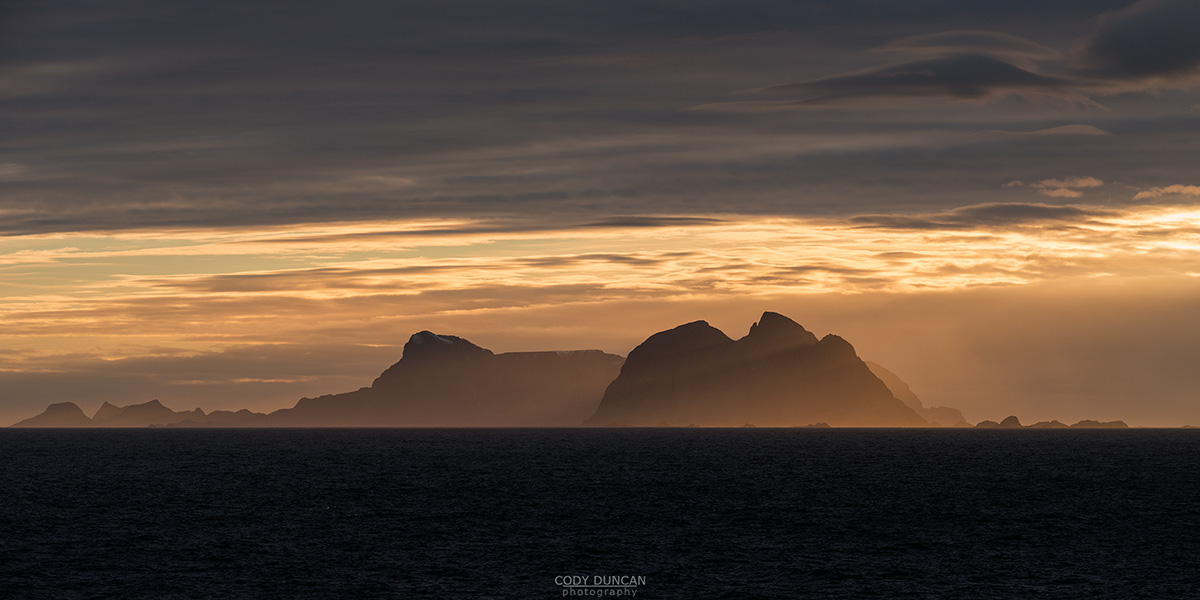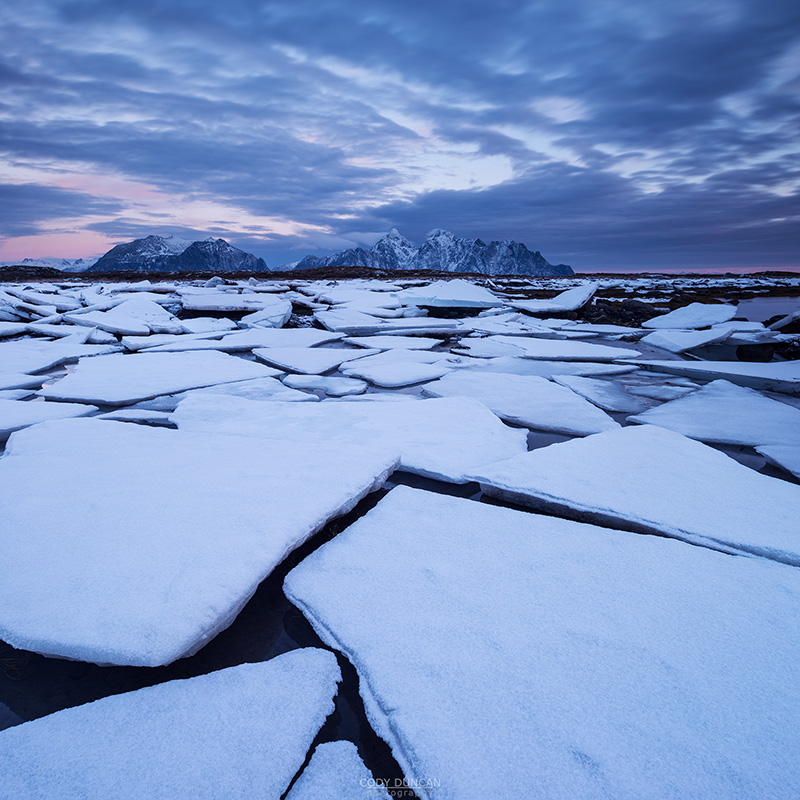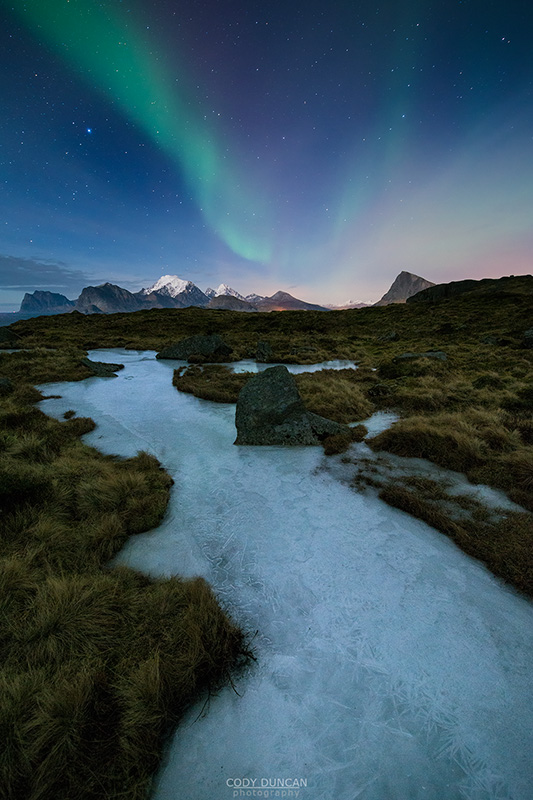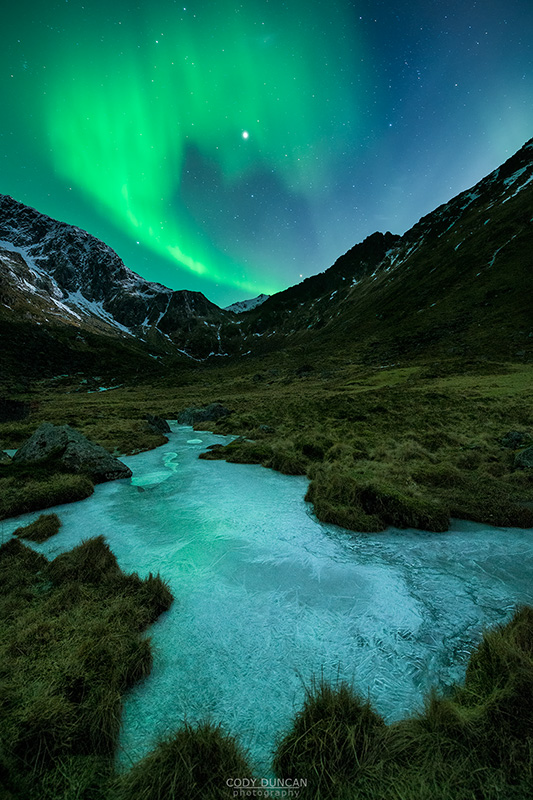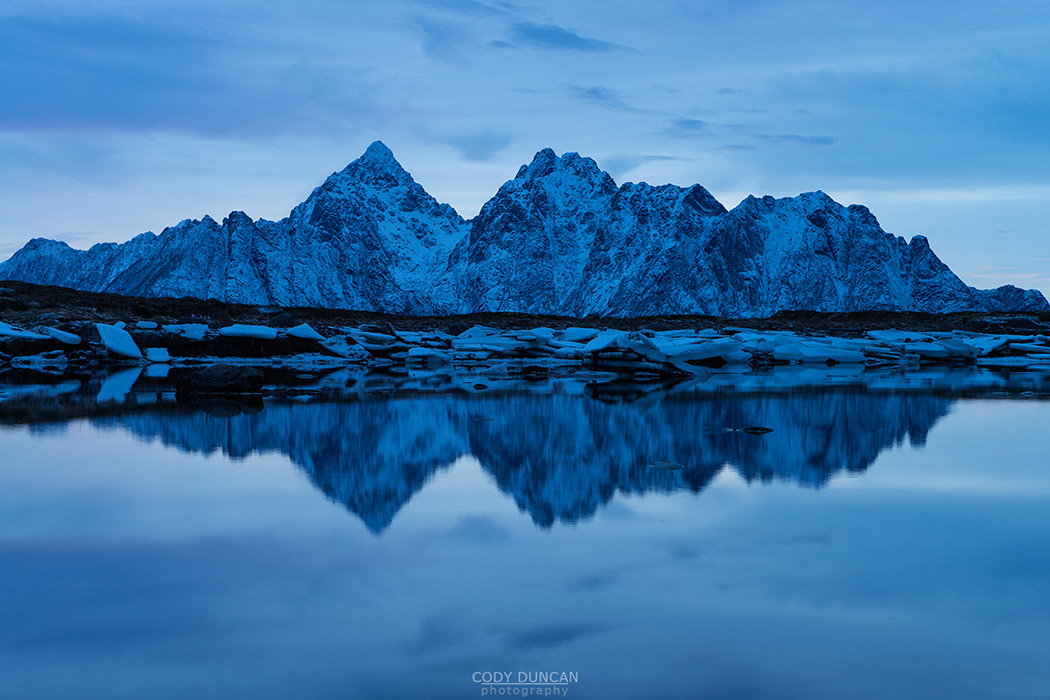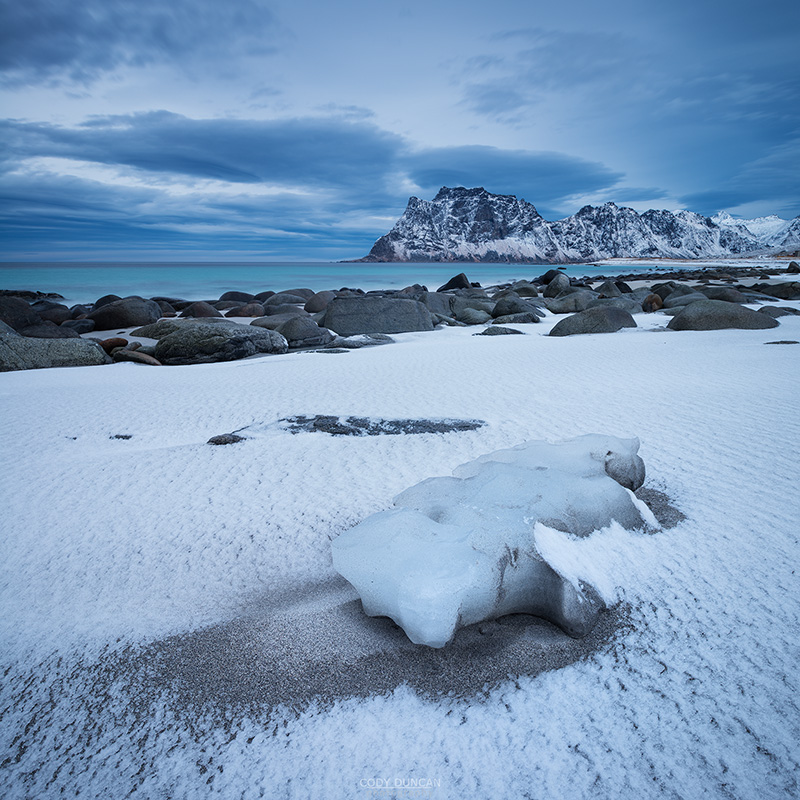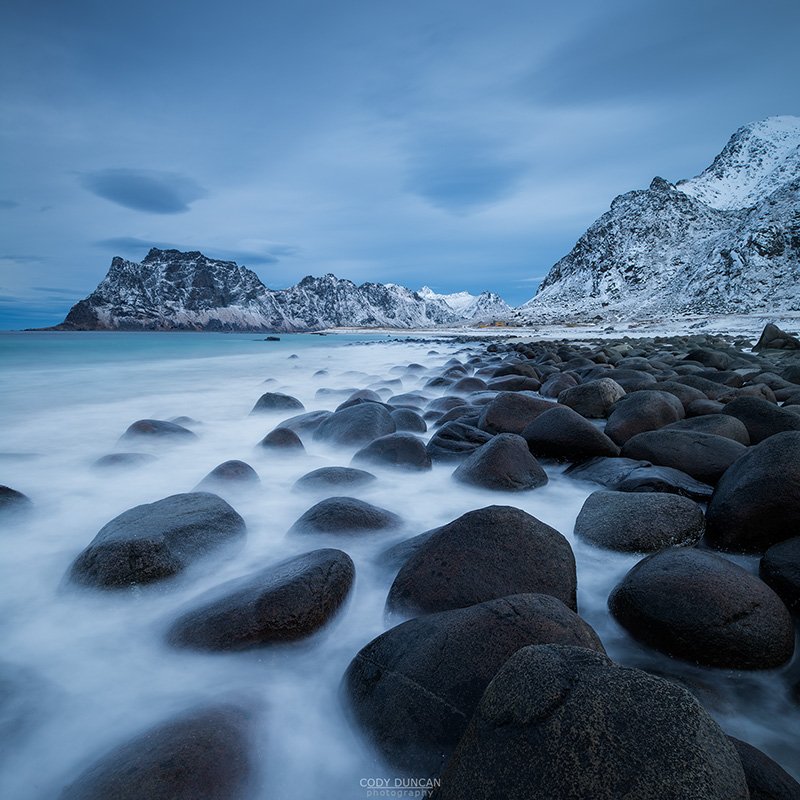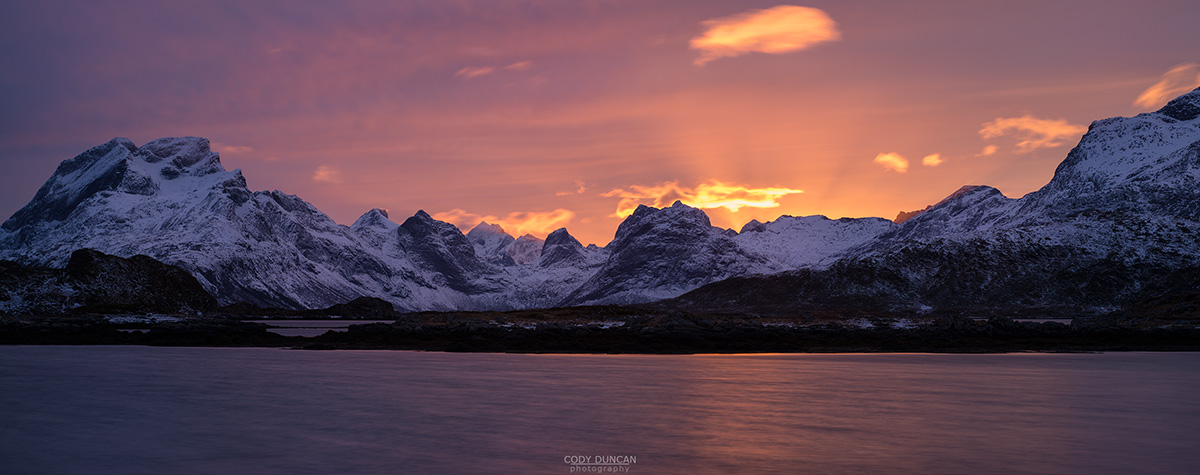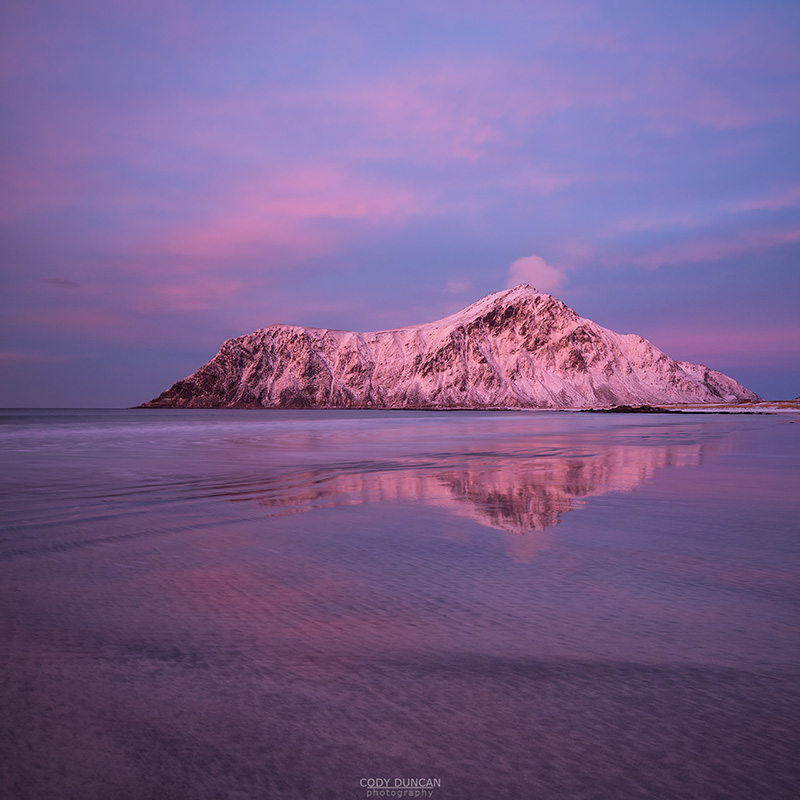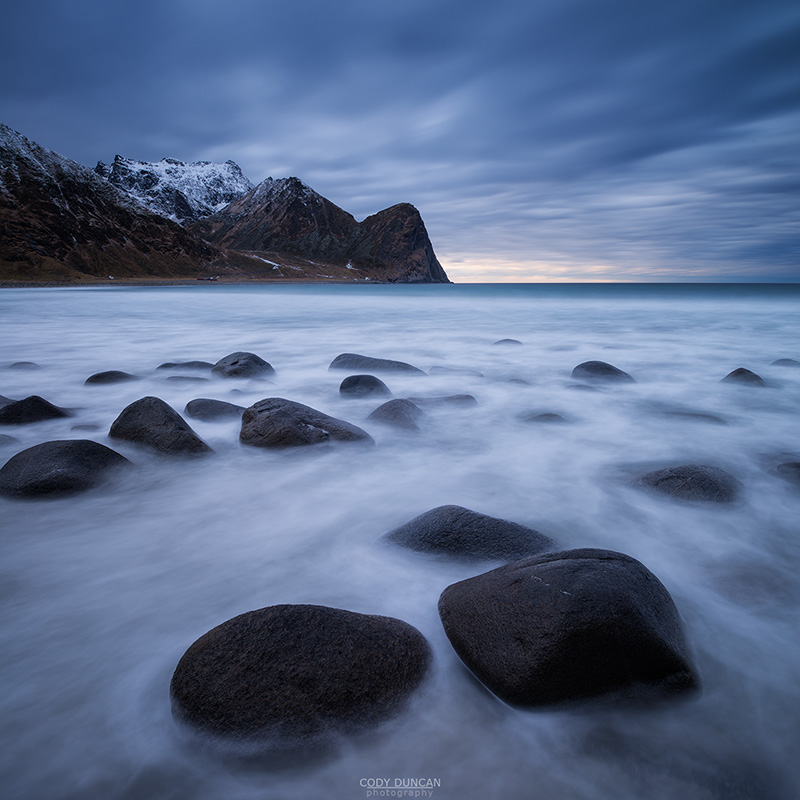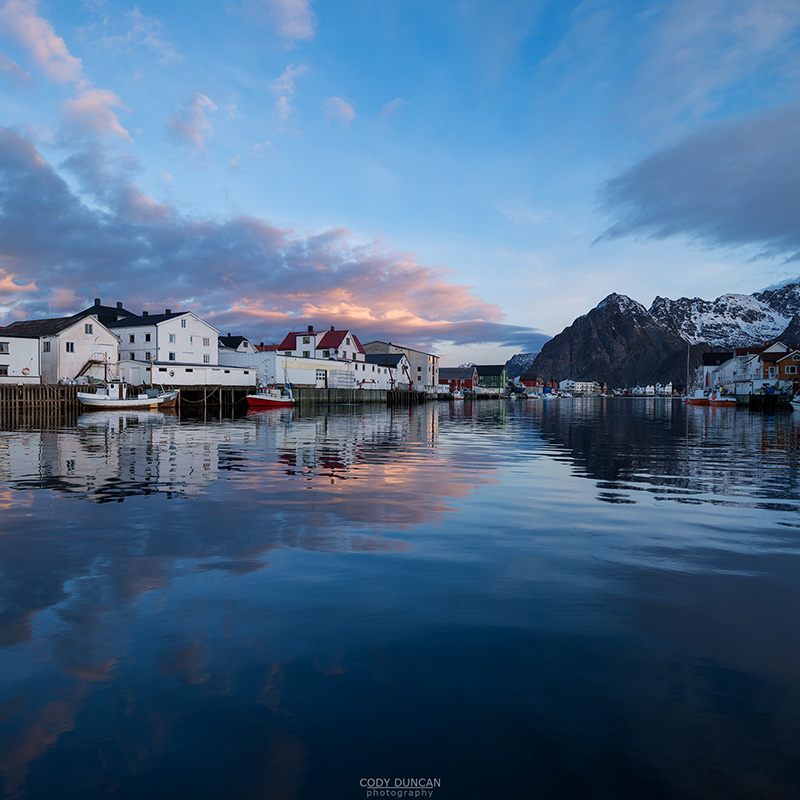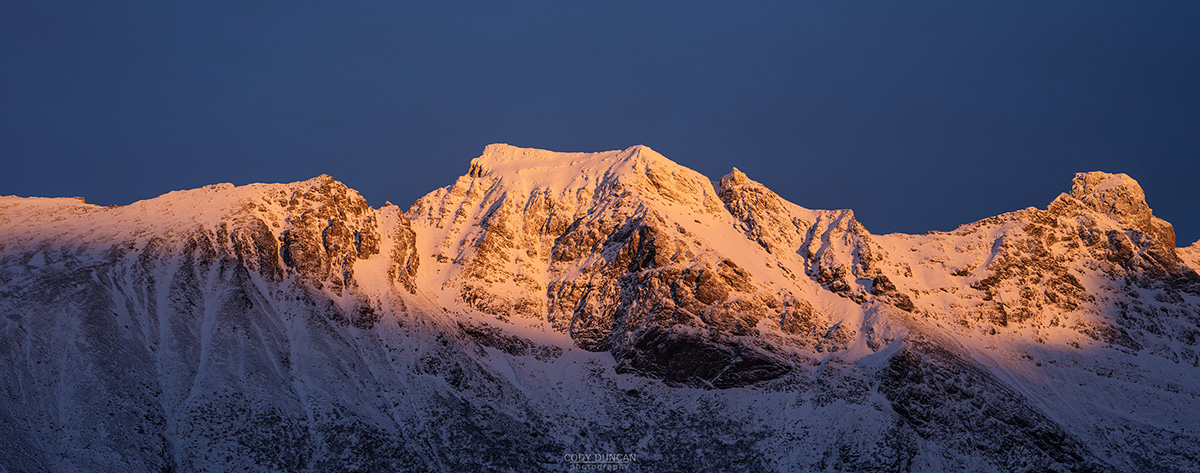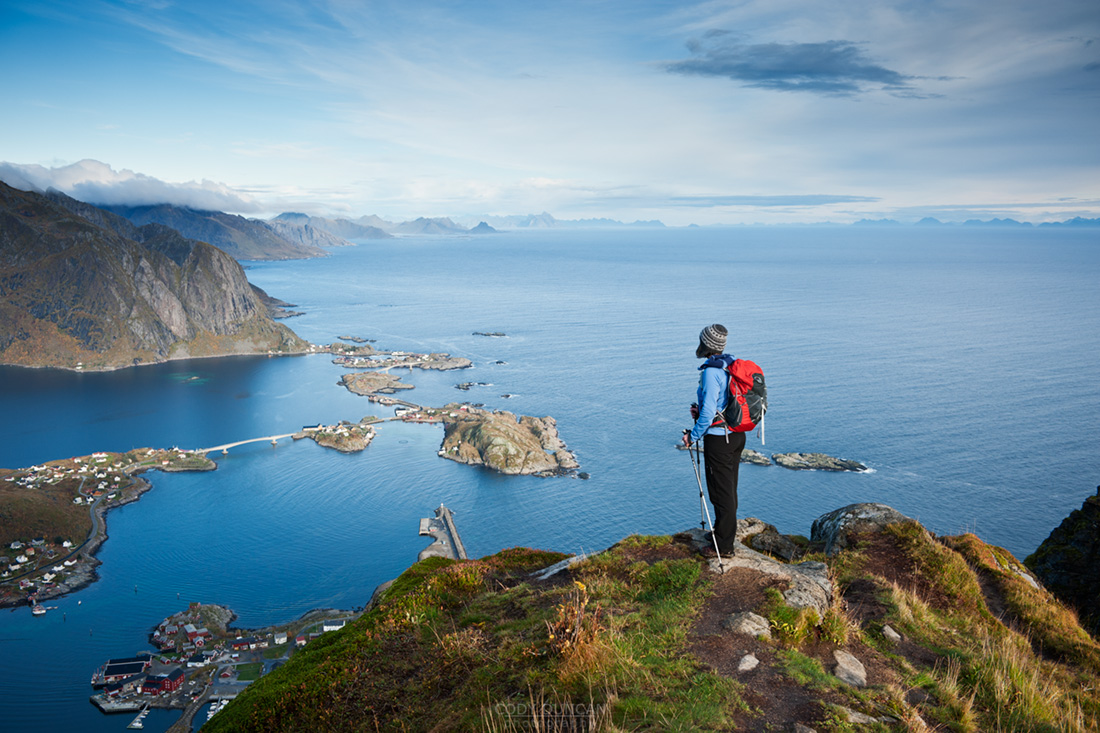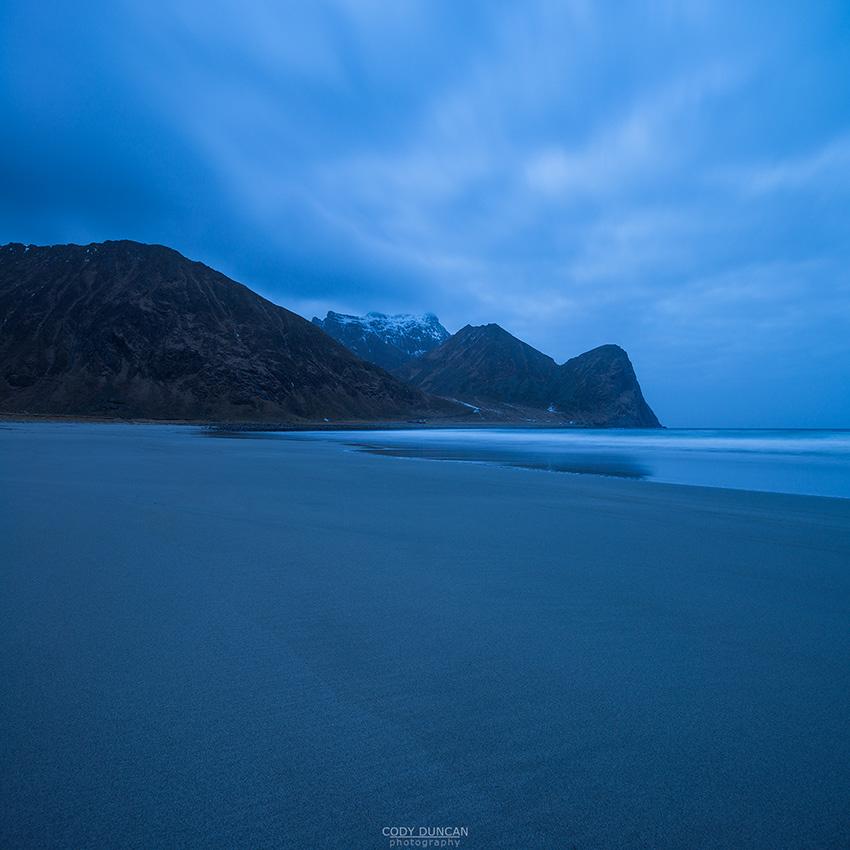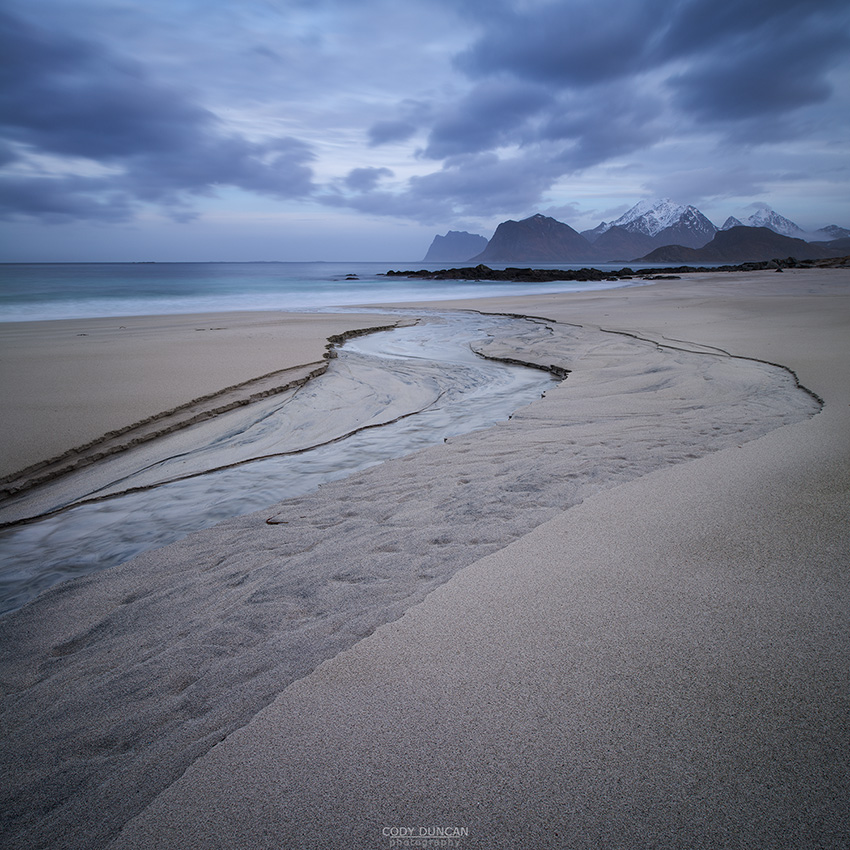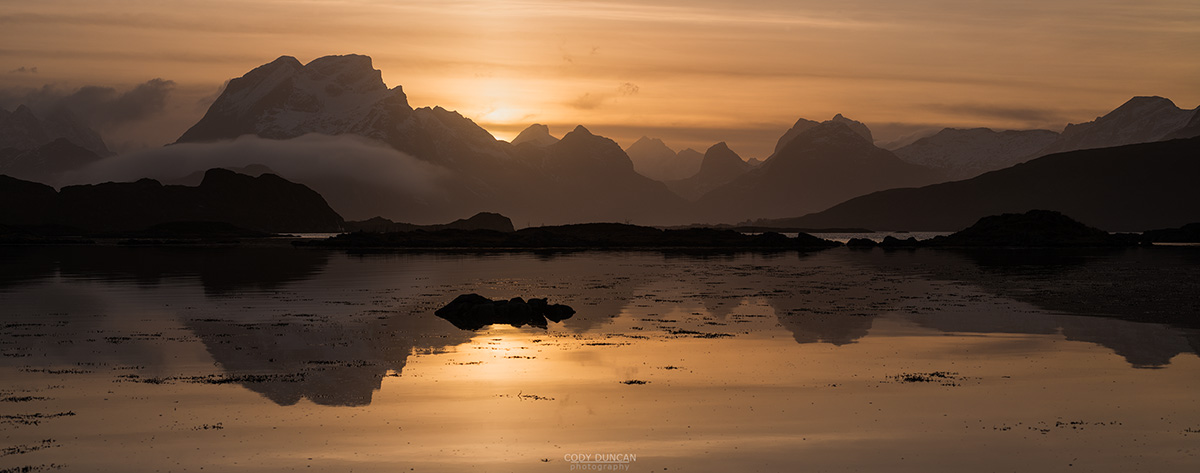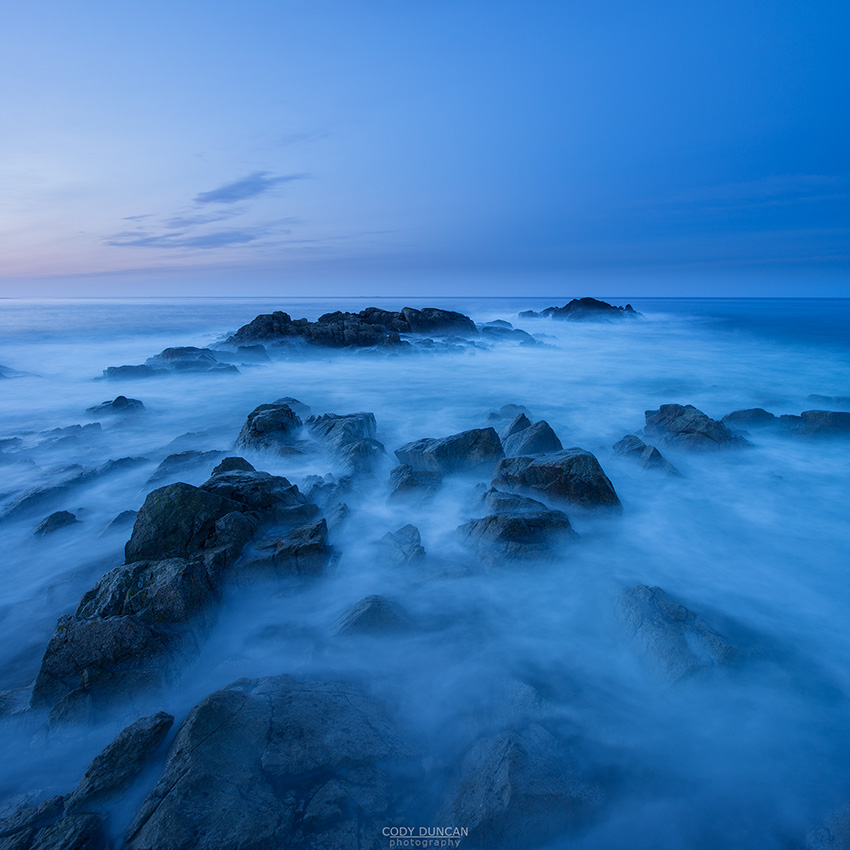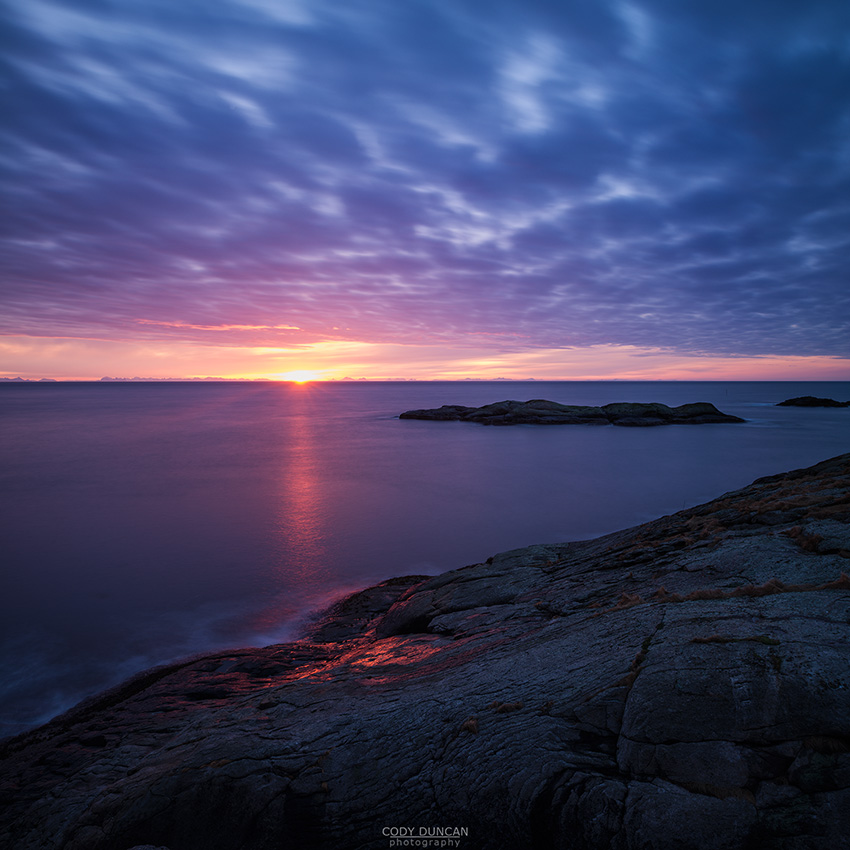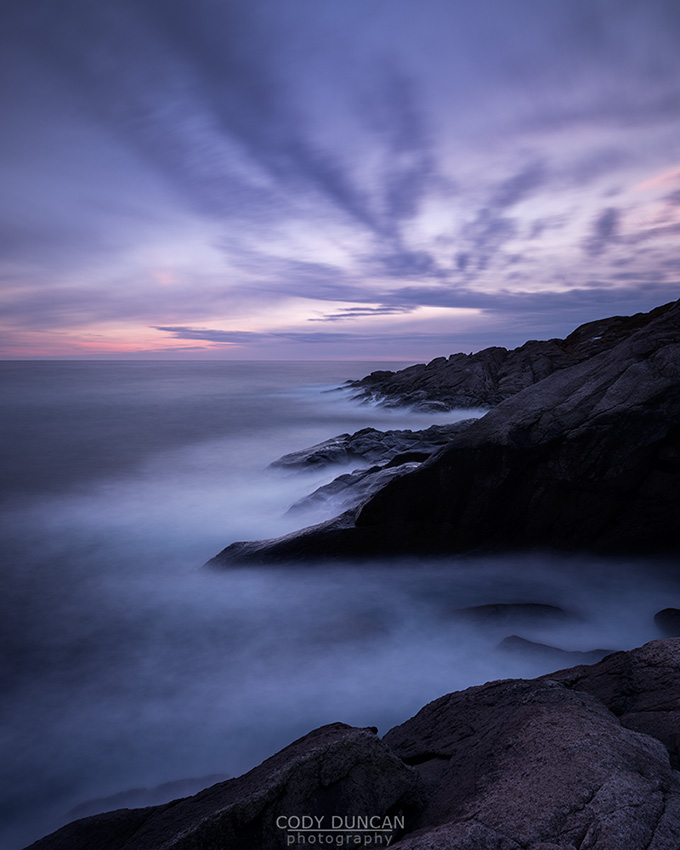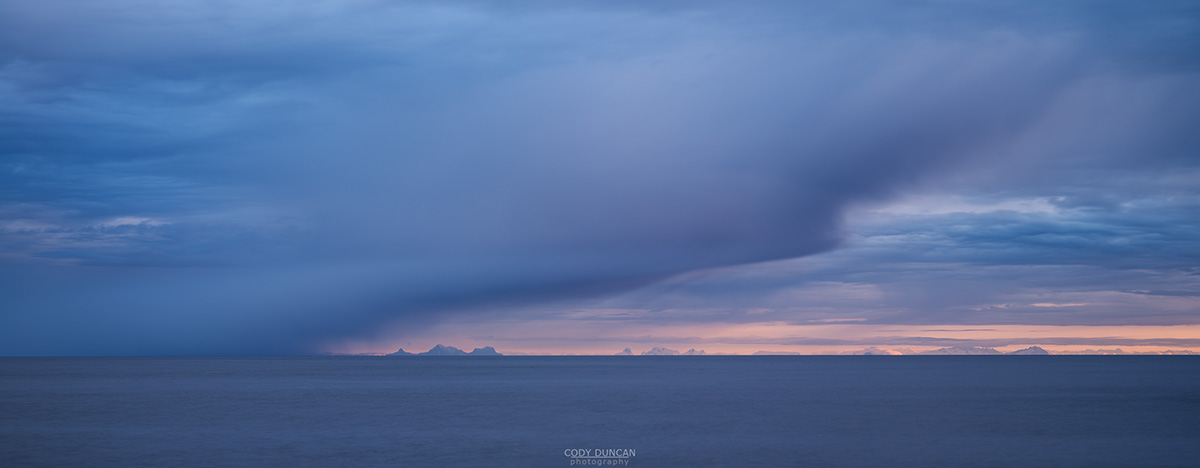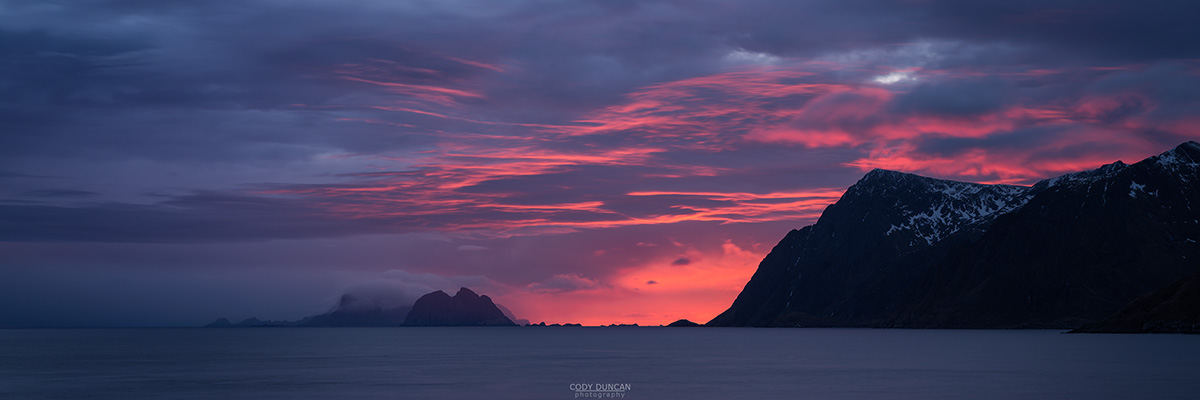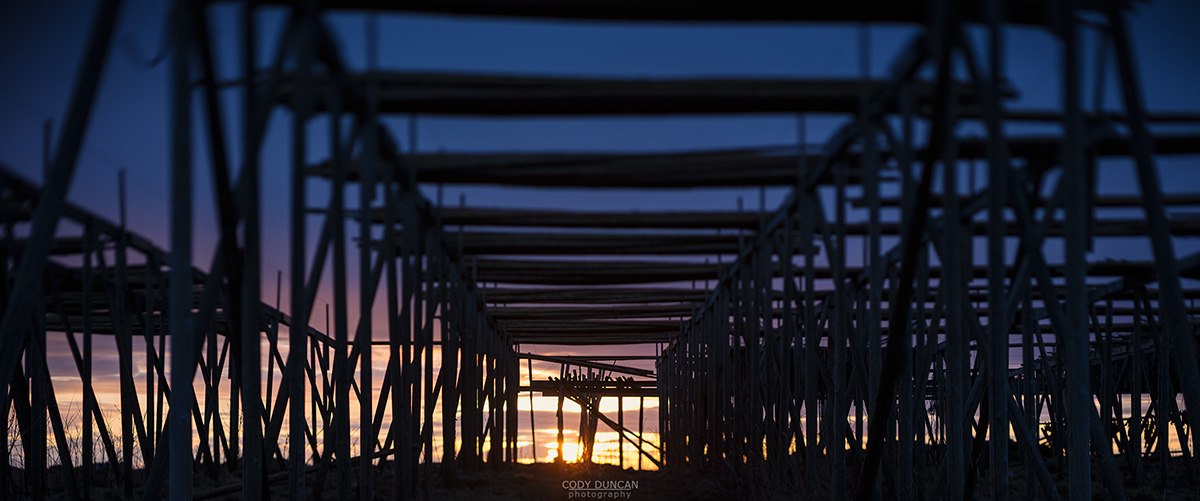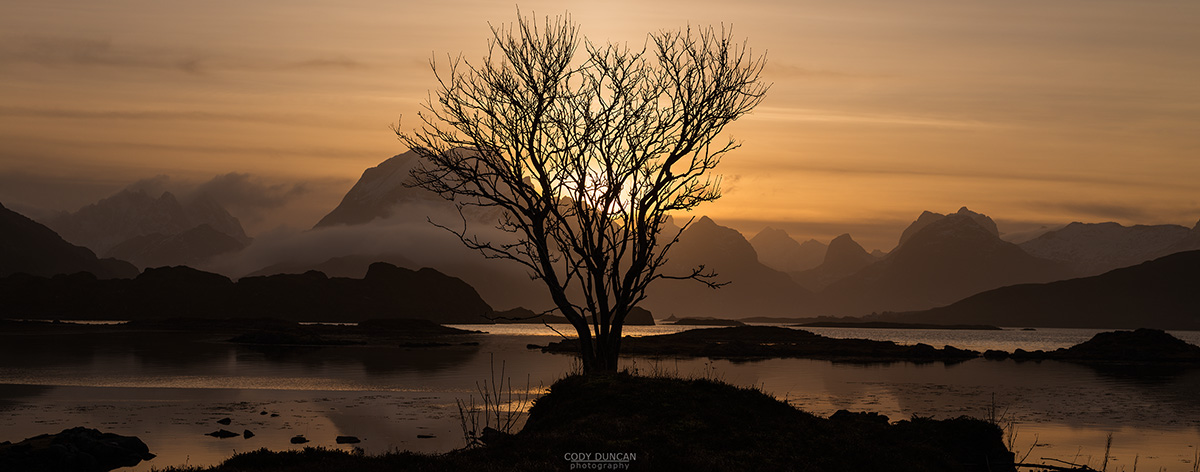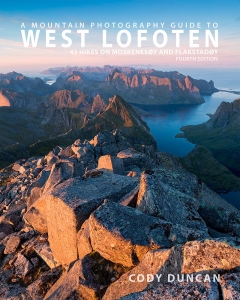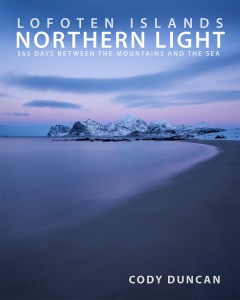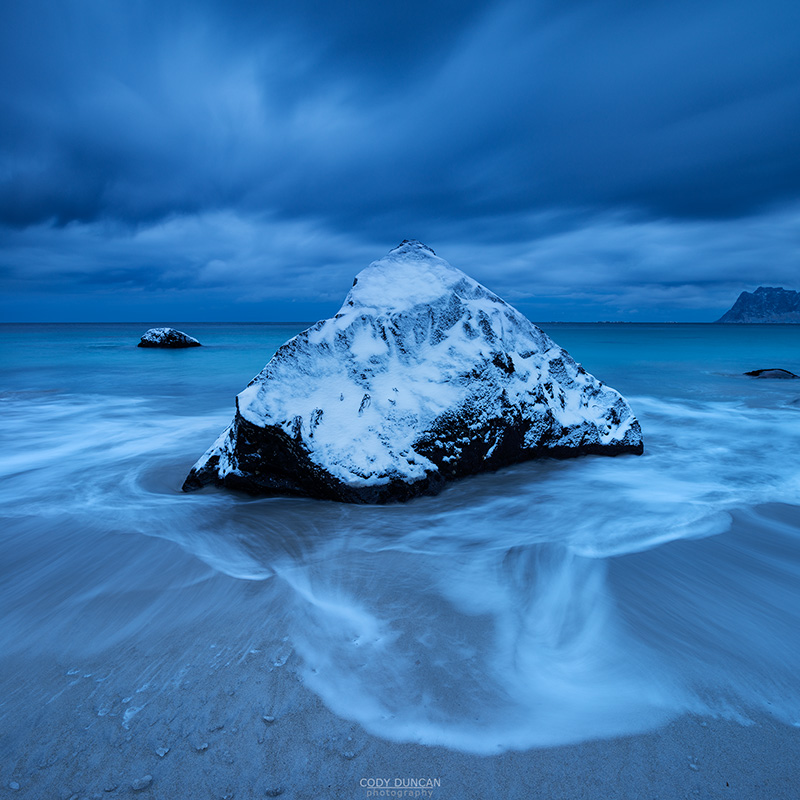
Photo: Myrland beach at dawn, Flakstadoy, Lofoten Islands, Norway. February 2014
[Part 2 of my February/March 2014 Lofoten Islands travels]
February mornings are slow to arrive on Lofoten, so even if you’ve been up late chasing northern lights the night before, there is still plenty of time for a bit of sleep. In fact, there is often too much time for sleep, as darkness is still the dominant element of the season.
Stirring uncomfortably for hours due to the combined effects of cold and the lack of a sleeping pad to soften the otherwise hard trunk of my rental car, I dreamed of dawn as the batteries faded in my iPod as I repeated the same podcast to pass away the time. Looking at my watch, I decided it was time to rise, 07:00.
I exited the back of the car into a world of night, snow swirling brightly in my headlamp as I quickly hurried to the softness of the drivers seat and started the car. I was expecting to see the beginnings of day appear on the horizon but the only thing to escape the blackness was the snow lit by the car’s headlights.
Doing my best to judge the wind direction, I left Utakleiv and headed towards somewhere which might be a bit more sheltered. It’s always windy in Utakleiv anyways, even on calm days. The squeak of the wiper blades were the only break in the silence as I traveled the dark, snowy roads to Myrland, on the eastern edge of Flakstadøy. With a couple of seldom visited beaches, compared to the more famous neighbours visible across the Nappstraumen, Myrland has been a productive location for me in the last couple years, almost too visited.
I parked my car overlooking the sea, only barely visible through the snow and grey light which signalled the arrival of morning. It was Sunday morning, and I had nowhere to go, only to wait in darkness and see what would happen.
Now, this is normally the time when having a book would be useful to pass the time. But as I had been somewhat busy back in California prior to my departure to Lofoten, I didn’t have the time to procure any. Or to say more accurately, it didn’t seem like much of a priority. Maybe I was making a statement to the universe that the light would be so good that I wouldn’t have anytime for reading, or perhaps I simply forgot what being alone and bored was like. Anyhow, I would soon regret this decision, though not so much as to buy an over-priced book in Norway; not much of an English reading selection on Lofoten anyways that could entice $30 from my wallet for an day’s entertainment. To add even more to my first world problems, I hadn’t even brought my laptop with me to at least get some writing done as my ambitious plans for Sweden didn’t allow for the extra weight.
If you’ve previously read about any of my Lofoten travels it might seem like I’m poor at planning and haphazardly stumble around the islands. But this is actually a well thought out plan to keep me productive as possible. You see, my greatest enemy is laziness. And comfort brings laziness. If you have a warm fire, hot food, and a soft bed, the weather is almost always ‘too bad to go outside,’ or ‘it will be better later.’ But it turns out that ‘later’ never comes.
Stuck in a car for 24 hours, outside becomes an escape from boredom. And outside is where the photos are. So even with poor light and casting winds, boredom leads my mind to thoughts like, ‘Hmm, I wonder what might be up that hill,’ or ‘those rocks look sort of interesting, I wonder if I can come up with something.’ So really, every shot I take might not be jaw dropping colorful (over processed) sunsets, and I probably even take a fair amount of bad photos, but the short days of winter tend to be the most productive for me, since i have no comfort to escape to. Though I often do allow myself a berlinerbolle for breakfast every day or two to have a little bit of comfort. Ample supplies of chocolate help as well.
After some time the storm begins to pass and the sky continues to lighten. I look down to the sea and see what I’m looking for in the soft light as the small waves meet the snow covered beach. I pull out my gear and get to work for the next hour until a flat grey light has enveloped the islands. With northern lights the previous night, and now scenic snow covered beaches, I thought I was off to a pretty good start for winter on Lofoten.
Before I left California a few people had gotten in contact with me who would also be traveling on Lofoten around the same time as myself. As morning passed, I got in contact with a nice italian couple, who like myself, were also doing the car-camping thing and made plans to maybe try and meet up somewhere down by Reine or Å. So off I headed, west along the E10 towards Moskenesøy.
Passing Reine, the light wasn’t so nice so I continued on towards the town with a name that everyone always seems to have trouble pronouncing, Å. Perhaps also one of the shortest town names existing anywhere.
Å I Lofoten, the formal name to distinguish it from any other Ås which might exist, can often be a good place for winter sunset, as the afternoon sun passes low over the distant island of Værøy rising across the sea before meeting with the final mountains of Lofoten itself. January to early February is one of the best times for this location, before the sun begins to set too high in the west as the vernal equinox begins to near and the days grow long.
Well, it turns out, the light down there wasn’t so good either and there wasn’t much snow out on the rocks which is really needed for the scene. On the other hand, was a frozen lake Ågvatnet, with cool patters of light snow drifting across the surface, blown across the ice since the passing of the morning’s storm. The more interesting patterns and shapes were deep in the center of the lake and I was somewhat hesitant to venture alone that far onto the ice. But upon seeing a few locals walking and ice skating around, I figured a frozen death wouldn’t likely come on this day and proceeded out onto the lake, soft rays of sunlight hitting the surrounding mountain peaks.
A little while later I headed into Reine where I met up with my new Italian friends, before deciding to head back to Å again. Once more, it didn’t look like the light would do much for sunset, so we headed out onto the lake again until night arrived.
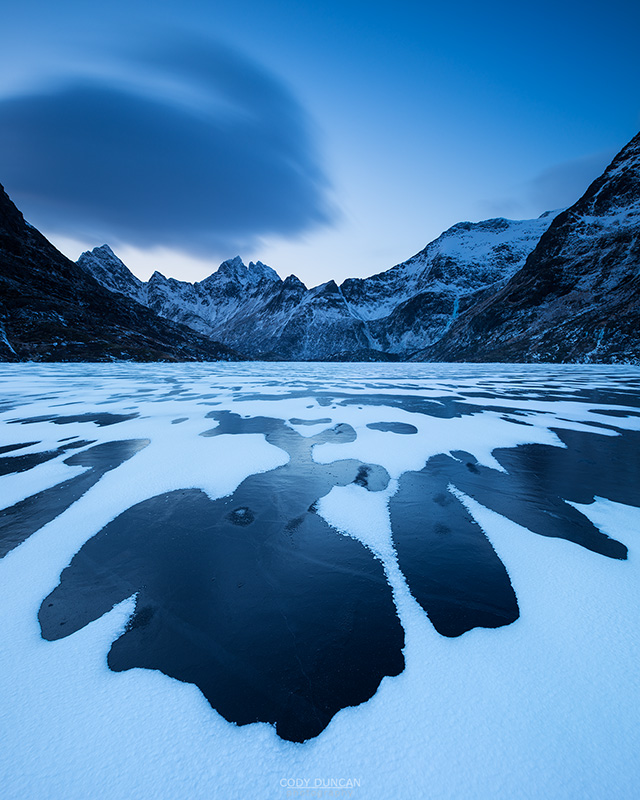
Photo: Snow covers lake Ågvatnet in winter, Moskensøy, Lofoten Islands, Norway. February 2014

Photo: Snow covers lake Ågvatnet in winter, Moskensøy, Lofoten Islands, Norway. February 2014
The one benefit of the dry and snow free conditions this year was that all the parking areas where clear and open. Often it can be a bit of a challenge to find a snow free area to sleep in the car overnight, particularly in the western part of the islands and often I’m left parking under the bright lights of the parking lot in Å, which you’re technically not supposed to camp in, but that’s more so it doesn’t fill up with motorhomes all summer long, or so I tell myself. This time though, the nice turnout near the Djupfjord bridge was open, and despite being right next to the road, is about the best place to sleep between Å and Reine.
Morning brought with it a cold wind and a promise of rain. It was now Monday, and my second full day on the islands. Again, despite laying flat in the back of the car for 12+ hours, a combination of discomfort and jet lag served me with a restless sleep and I was once again glad to be back in the driver’s seat awaiting the arrival of another day.
I headed to a location near Reine and watched as the approaching rain and rising sun raced to see who would greet me first. It was a tie. Heavy drops of rain began to hit me just as the sun peaked over the jagged, teeth-like mountains of the Norwegian mainland and shone across the waters of the Vestfjord. A flash of pink lit the sky for a couple brief minutes as I retreated to shelter, only to be drawn back into to rain moments later and as a rainbow briefly encircled Olstind. Back at my car, I said goodbye to the italians and headed back east to Leknes.
The rain was still falling as I pulled up to Leknes. My main objective was to find a sleeping mat for the back of the car, unsure how many more nights on the hard, cold floorboards I could take. Sometimes the large Coop supermarket in the mall has something cheap on offer, and last year I even pickup a proper blow up mattress that one would use as a guess bed at home for only 99 NOK. It looked a bit funny in the back of the car, but it slept like a dream. This time, no luck (though I did see one later at the end of February, when I no longer needed to sleep in a car). The closest things was some exercise type yoga mat for 120 NOK. I guess that would have to do.
The rain was still falling as morning passed to afternoon and I made my way out to Unstad. Arriving at the beach, the wind was blowing fiercely and huge clouds of mist were blowing off the sea. I made my way down to the waters edge but at times it was nearly impossible to stand as gusts of wind blew loose my footing on the slippery rocks. I haphazardly cut and taped a plastic bag around my camera to protect it from the driving rain and hale. My hands near frozen, I lost grip on one of my lens caps and it went flying off somewhere far beyond my reach. After a few moment, I figured I’d had enough and retreated to the car.
I wanted to park my car on the left side of the beach, but in the blowing winds it was rocking like a boat at sea and I wasn’t too sure it would remain in the same place all night long so I opted for the more sheltered parking area at the right side of the beach. After making myself a sandwich for lunch, I curled up in my sleeping bag to keep warm. It was just after 14:00.
I next opened my eyes to find night had arrived. Looking at my watch, it was 20:00. The rain was still falling at the wind ever blow, but now with a slightly calmer temperament. I turns out I had parked my car in the light of a newly installed street light, so I moved to car into the shadow cast by the old building, then was back into my sleeping bag. Twelve more hours until daybreak and I’d already had the better part of a night’s sleep. I thought of what the distant morning might bring.
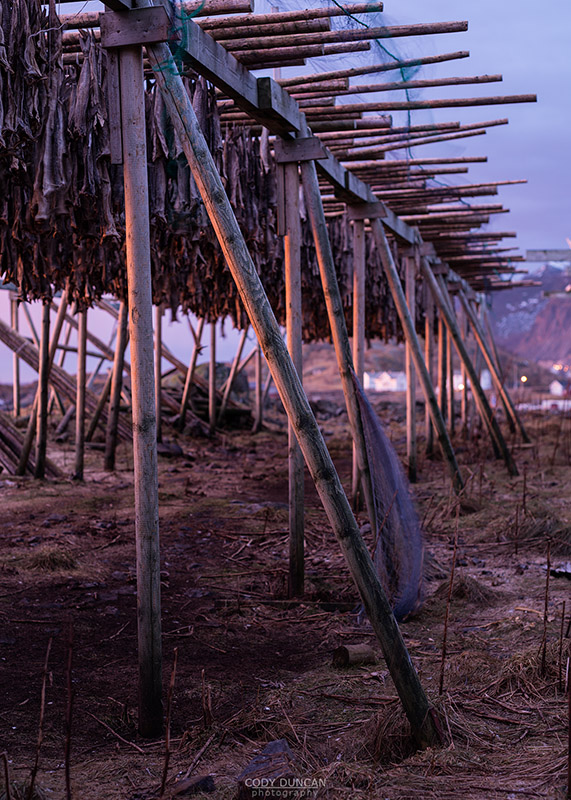
Photo: Stockfish hang to dry in the cool winter air, Toppøya, Lofoten Islands, Norway. February 2014
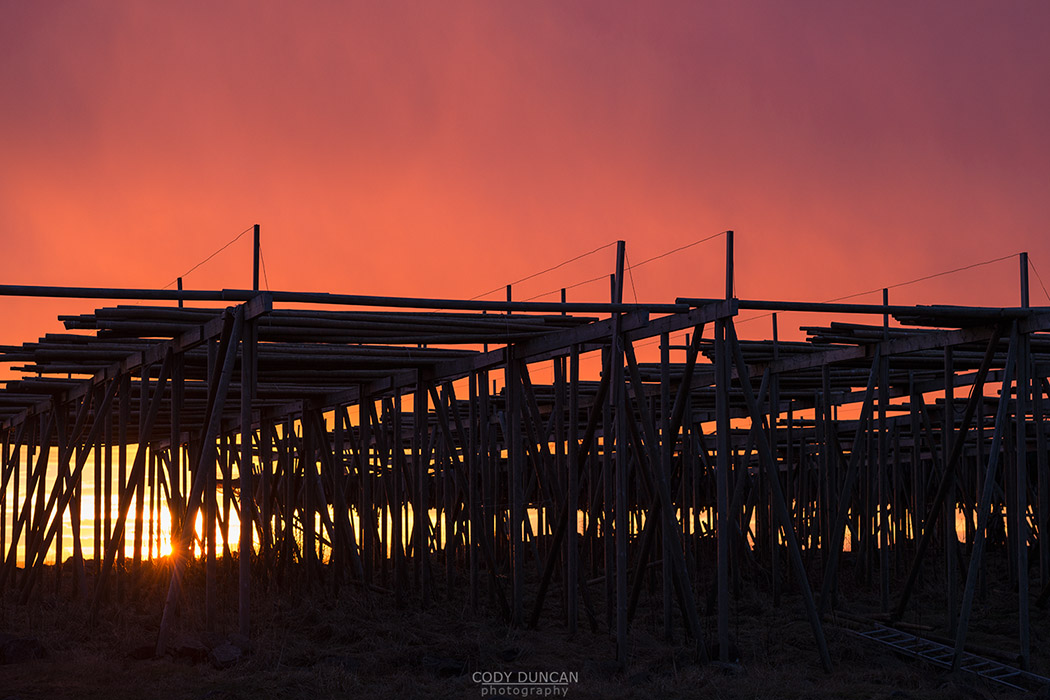
Photo: Sun and rain meet at dawn, Toppøya, Lofoten Islands, Norway. February 2014
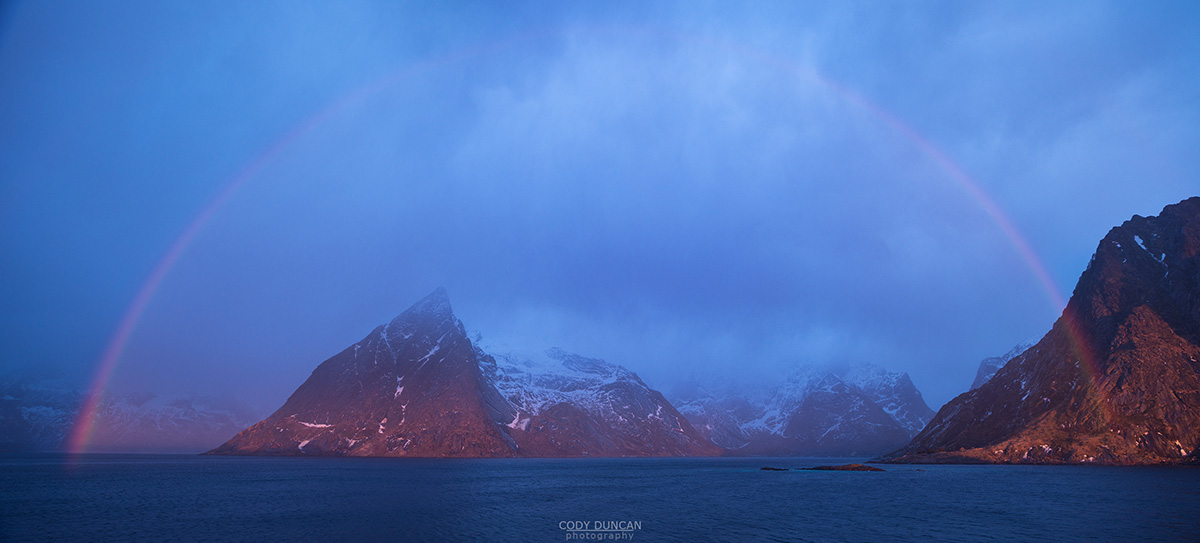
Photo: Rainbow over Olstind, Moskenesøy, Lofoten Islands, Norway. February 2014
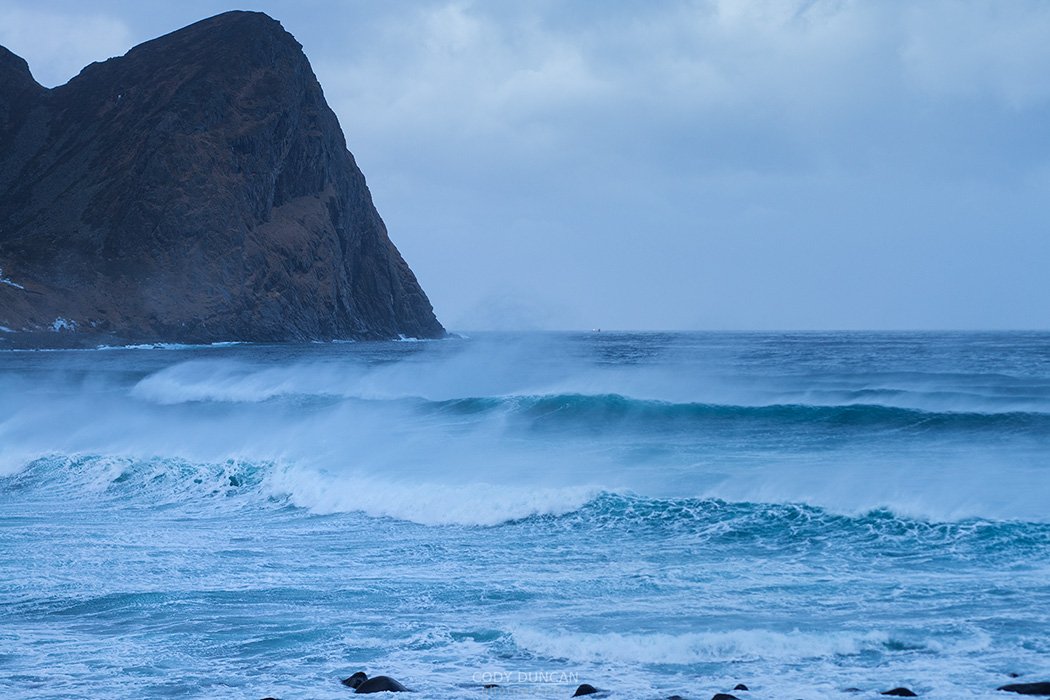
Photo: Wind blown waves at Unstad beach, Vestvågøy, Lofoten Islands, Norway. February 2014

